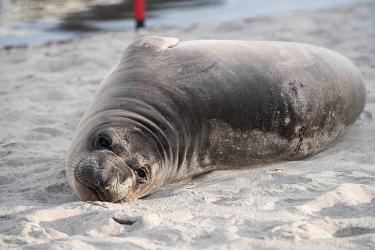In a remote area of south-central Oregon, the North Umpqua River flows through steep canyons and Douglas-fir forests to the ocean. Deep in the Umpqua National Forest, and just upstream of the North Umpqua River's Wild and Scenic Reach, the North Umpqua Hydroelectric Project has generated enough power for 40,000 homes since the 1950s. The project also prevented fish from swimming upstream to historical spawning grounds.
In the fall of 2012, as part of its license renewal process, PacifiCorp completed a multi-year construction project to add upstream and downstream fish passage facilities at the North Umpqua Project. At 77 feet tall, Soda Springs Dam, one of the Project’s eight facilities, completely blocked access to more than 6 miles of healthy habitat. Engineers tackled the narrow confines of the rugged landscape, as well as the complications of retrofitting an existing structure, to install a new fish ladder for upstream passage, and screens on the intake to divert downstream migrating fish around the turbines. The ladder has been in operation since October of 2012 and has been successfully navigated by salmon and steelhead. The following spring, a particularly photogenic pair of wild steelhead modeled in front of the counting window as they swam up the ladder.
“It was tricky to install fish passage in such a narrow canyon,” said NOAA’s project engineer Ed Meyer, “and the challenges we overcame make it all the more satisfying to see fish already using the ladder.”
NOAA Fisheries has been working with PacifiCorp and other partners to improve fish habitat and restore fish passage at the North Umpqua Project since a settlement agreement was signed in 2001. Chinook and coho salmon, steelhead, Pacific lamprey, and resident fish species are expected to traverse the 600-foot-long ladder that winds back and forth at the base of the dam, which fish encounter after swimming 180 miles from the Pacific Ocean to spawn. Once they pass the dam and the reservoir, fish will have access to miles of pristine spawning and rearing habitat.
Along with fish passage facilities, PacifiCorp, in partnership with biologists and engineers from NOAA Fisheries, the U.S. Fish and Wildlife Service, U.S. Forest Service, Oregon Department of Fish and Wildlife, and other federal and state agencies, is providing improvements to flows and habitat in the wild and scenic-designated reach downstream of the hydroelectric project, and within other stream reaches affected by the project. The goal of these improvements is to provide sufficient habitat for spawning and rearing while still maintaining the viability of the project for hydroelectric generation. Monte Garrett, program manager for PacifiCorp, noted, “it is an example of how cooperation among public agencies and utilities can result in positive outcomes on complex natural resource issues related to energy production.” A multi-agency committee will monitor the implementation of these improvements for the next several decades.


